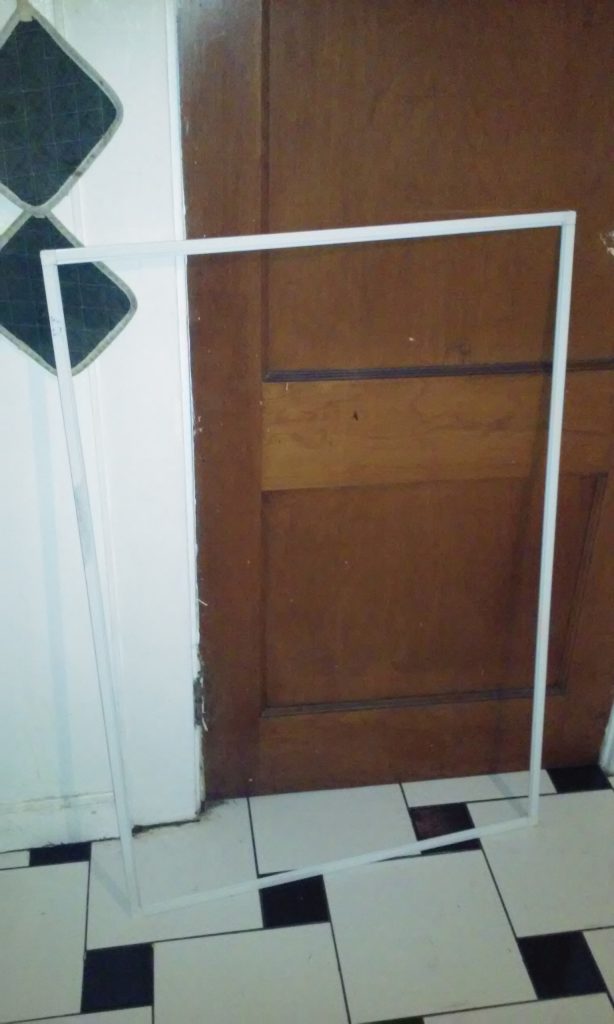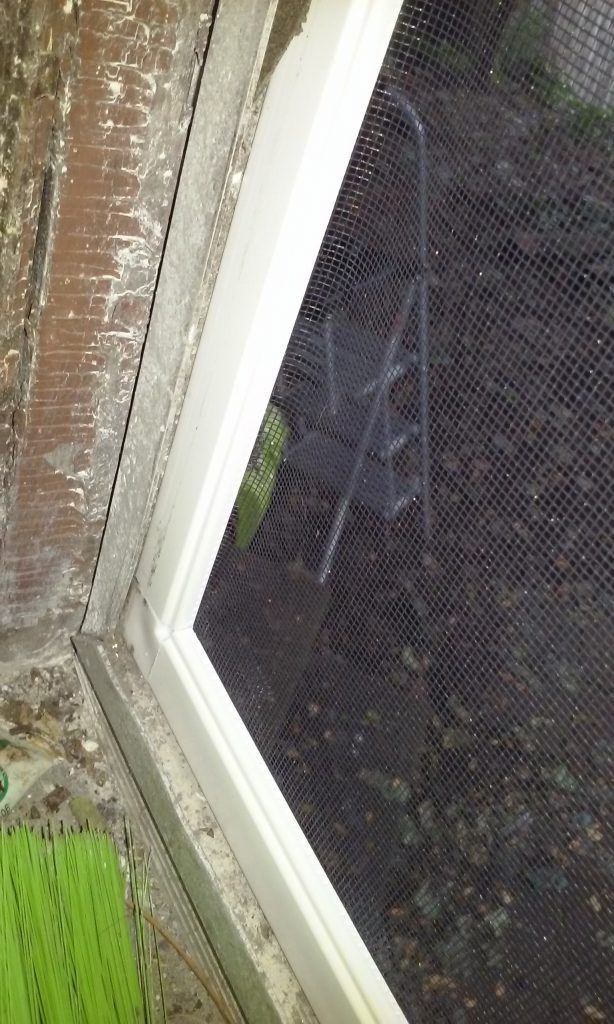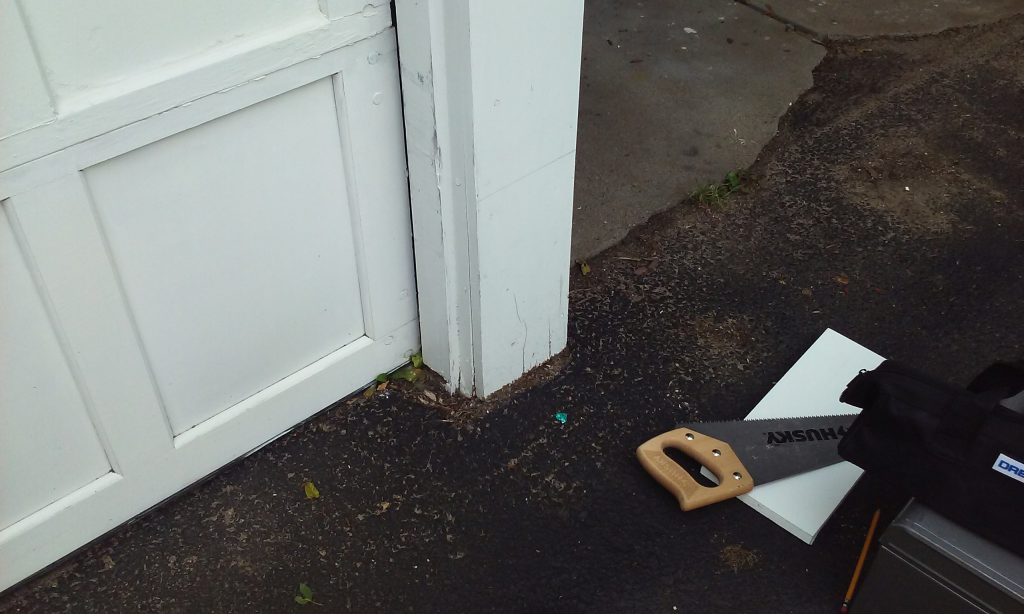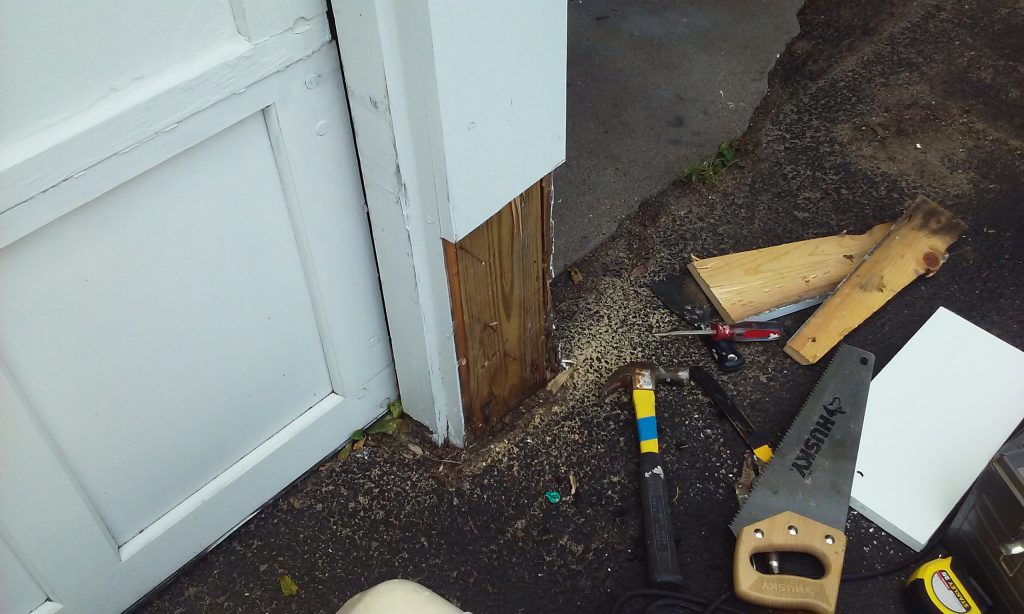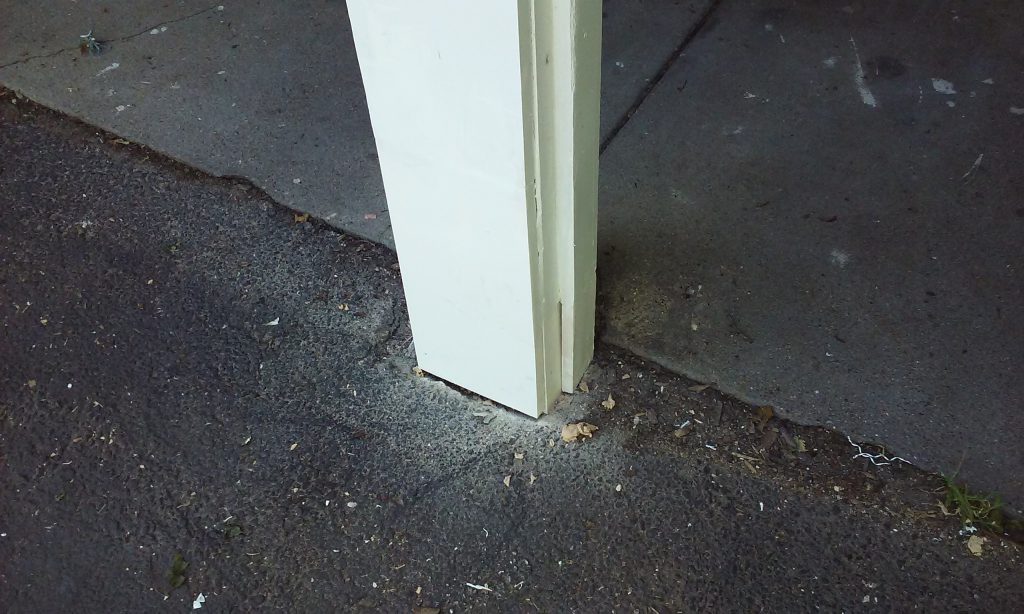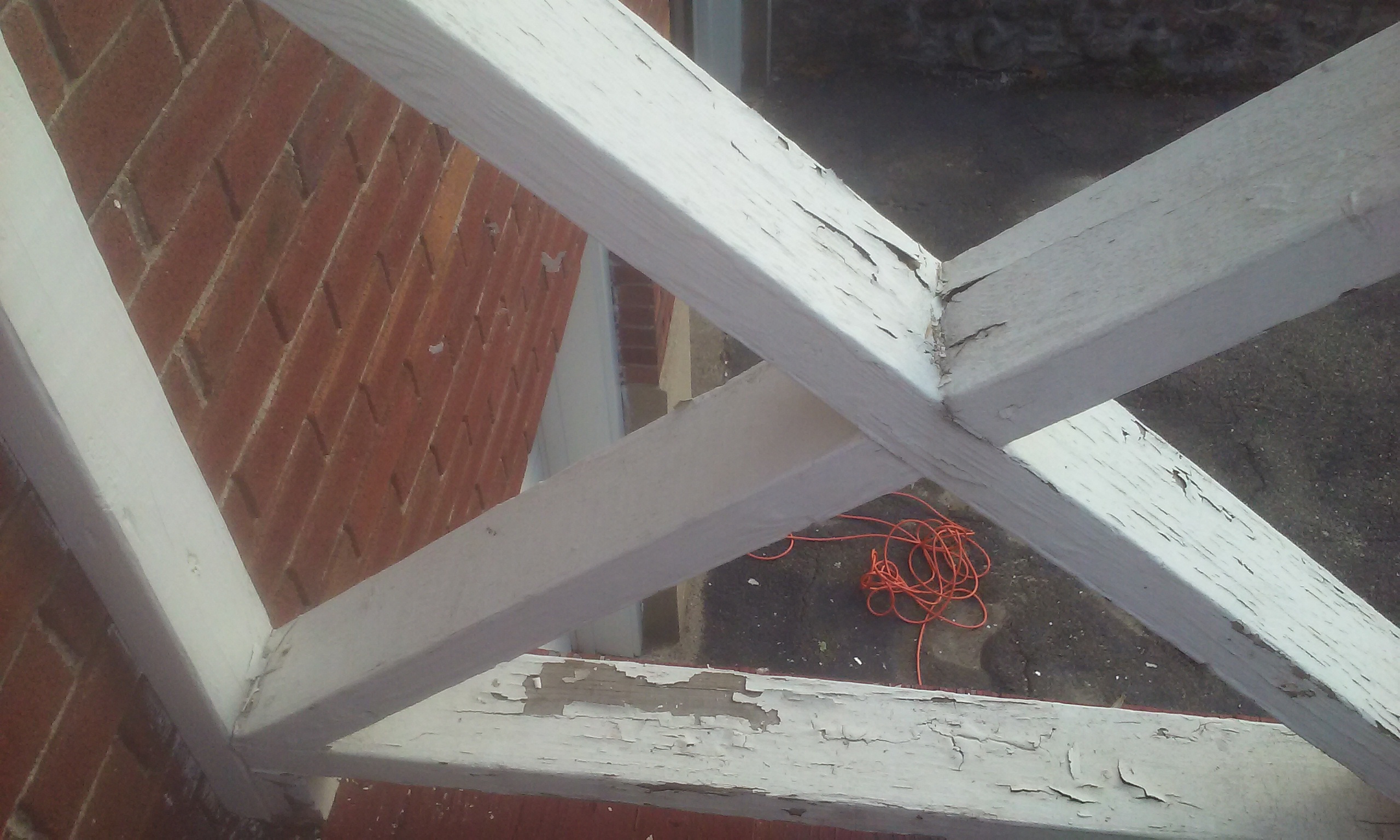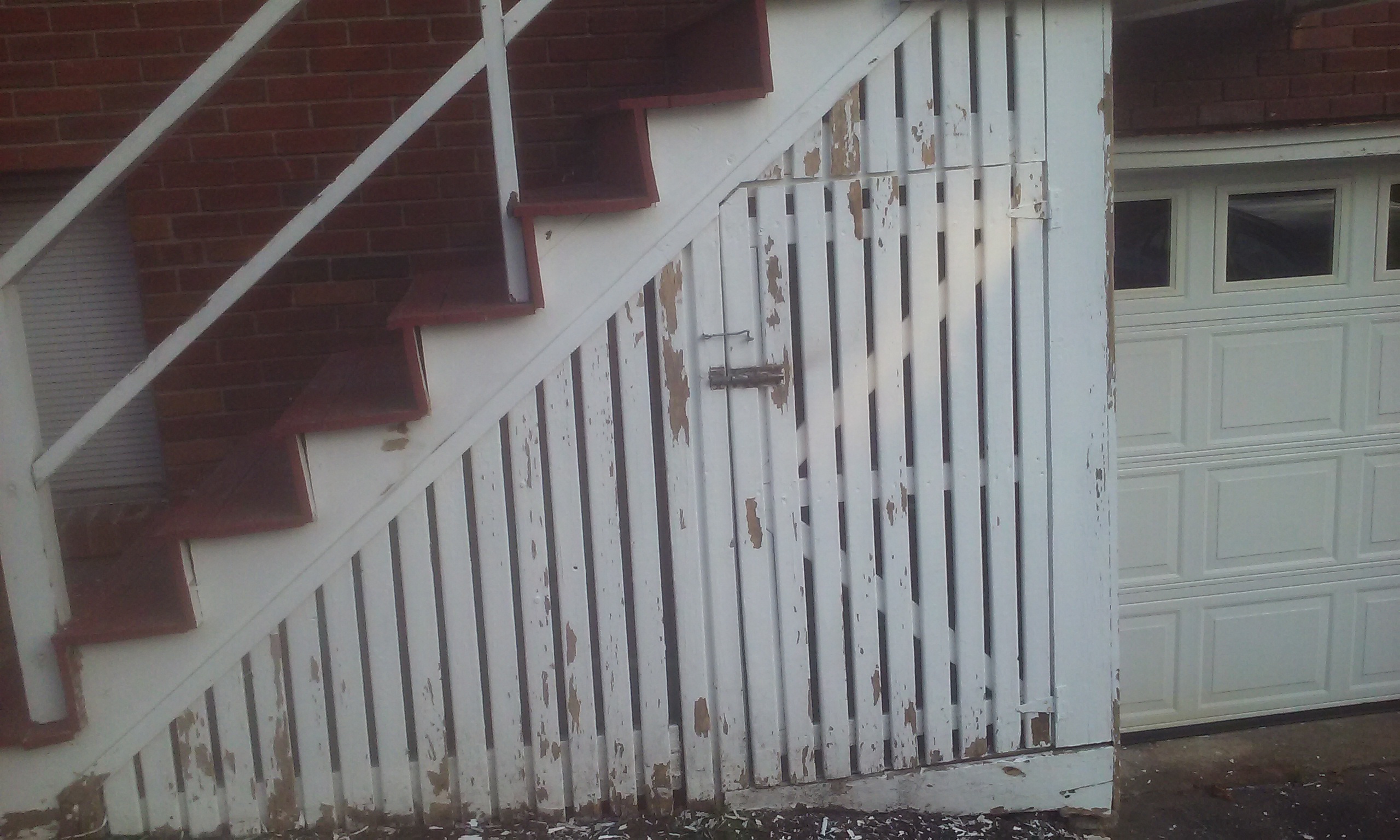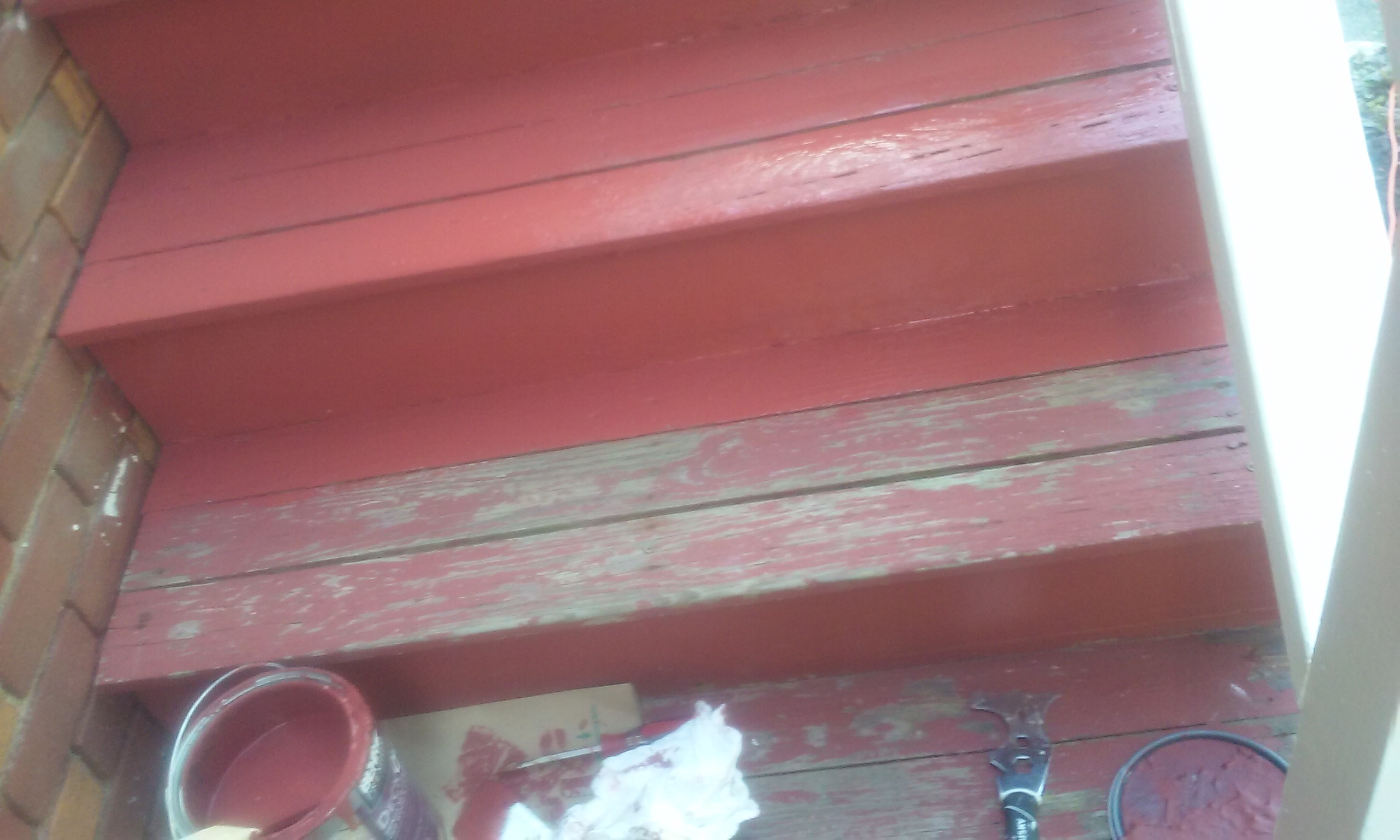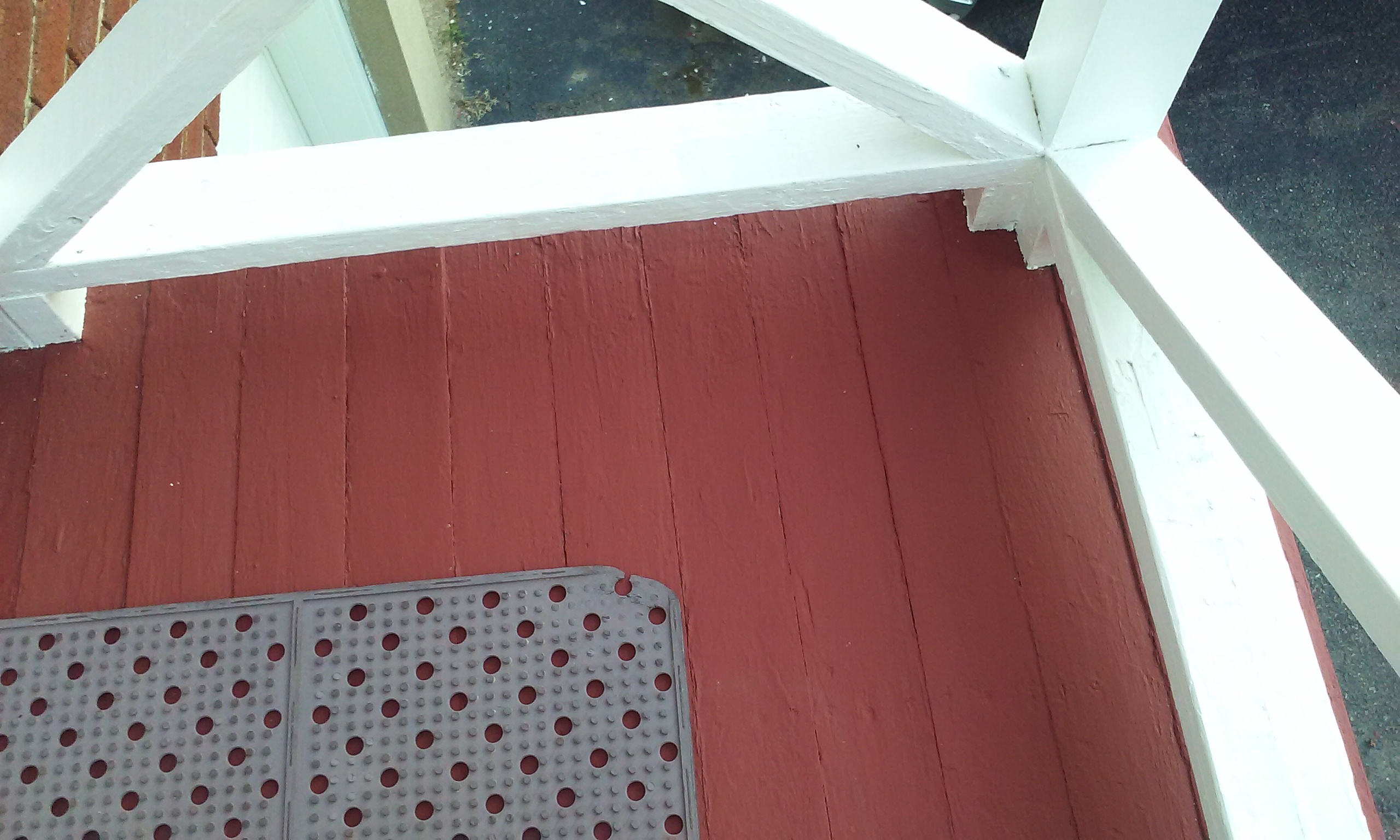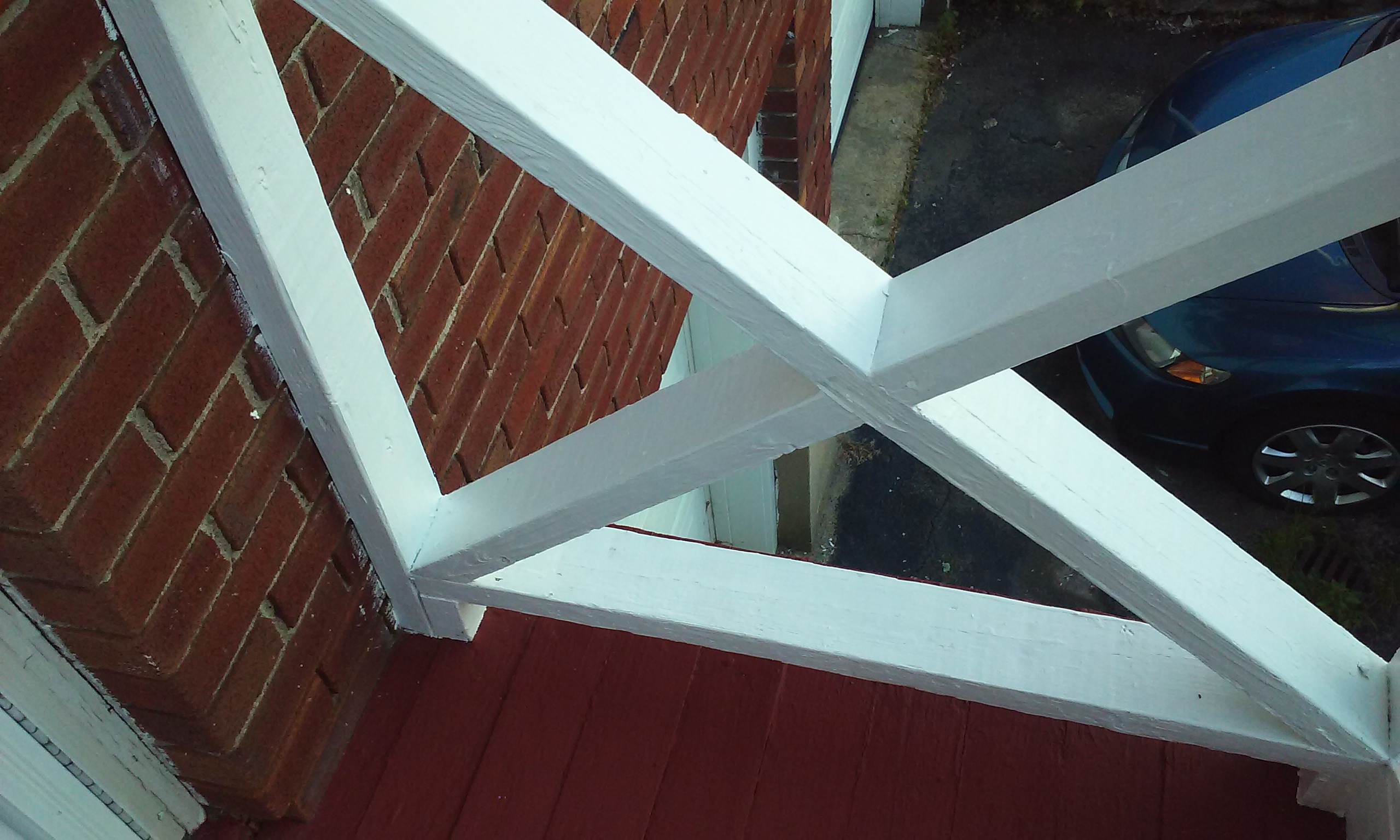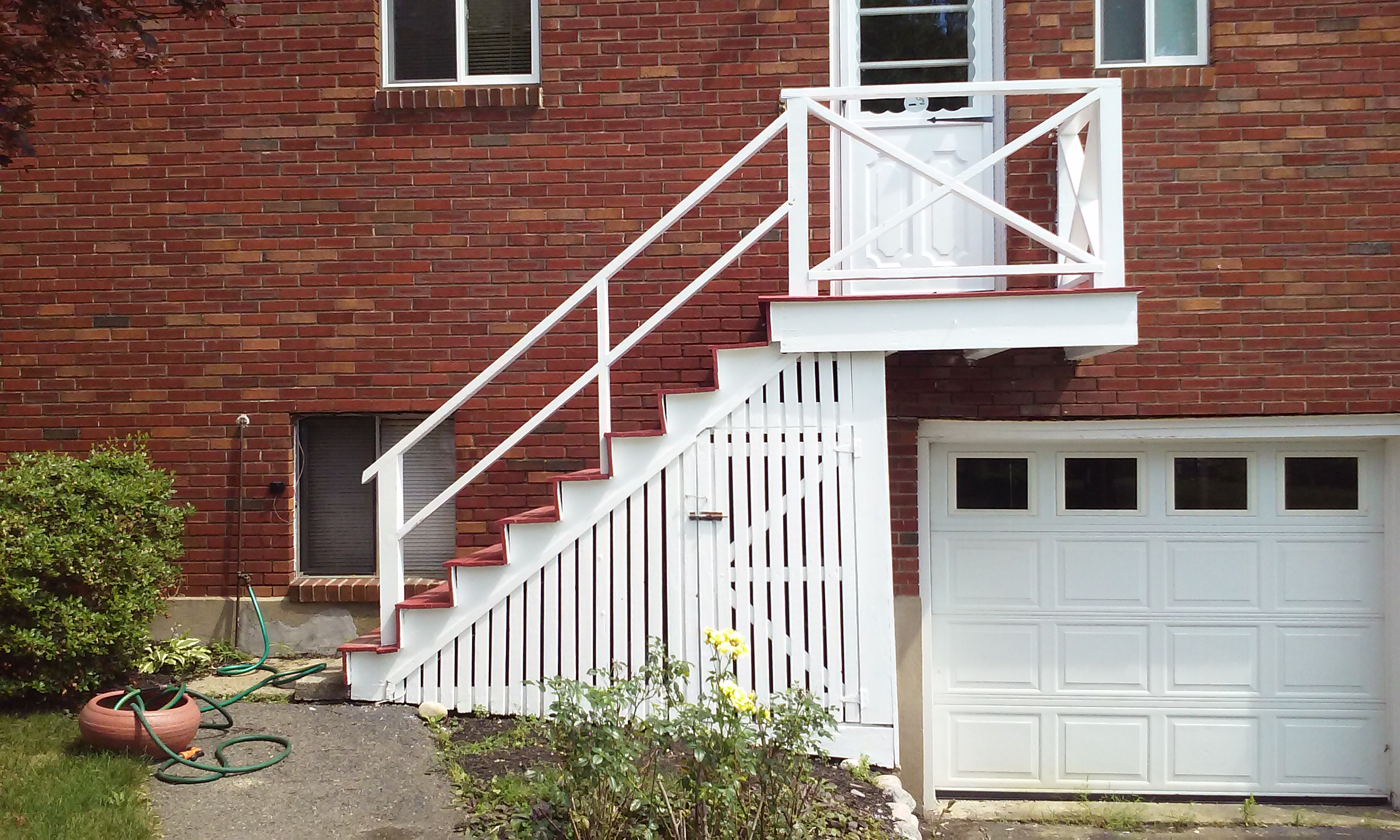Okay they say a picture is worth a thousand words. Here are two thousand:
Here is the story, this house has a beautiful old door with a tongue in groove weatherstripping all around. And I guess somebody banged the tongue of the weatherstripping down at the bottom, and it got bent, and this stopped the door from closing all the way. So some not too bright guy came over and decided that instead of fixing the initial problem (which I fixed in 2 minutes with some needle nosed pliers), he decided to accommodate the door’s not closing by moving all three strike plates 3/8 of an inch into the house. YEESH.
So he chewed up the jamb bigtime, and didn’t even use good hardware. A serious hatchet job. Both hideous AND the door was constantly ajar, letting cold air in.
So there were two options, either remove the door jamb and put in all new lumber and drill all new strike plate holes (double yeesh) OR . . . OR . . . somehow rebuild the existing.
So . . . I got the right hardware and removed all the junk. Fortunately the underlying door frame was still intact so i was able to attach the new deadbolt pockets (note the steel pockets in place in the upper holes 🙂 solidly to the frame with 3 and 4 inch stainless steel screws. It’s always dicey getting these strike plates in just the right spot to make the door shut nice and tight, but I managed to hit them dead on. The upper deadbolt even gives an extra tight closing feel, saving the homeowner money this winter.
Once all the hardware was back in proper place, I put wood dough in there and sculpted it to replicate the old millwork. Not perfect I admit, but close enough. A little primer, and it’s unnoticeable. And, no more being ashamed to open the front door to trick or treaters 🙂


